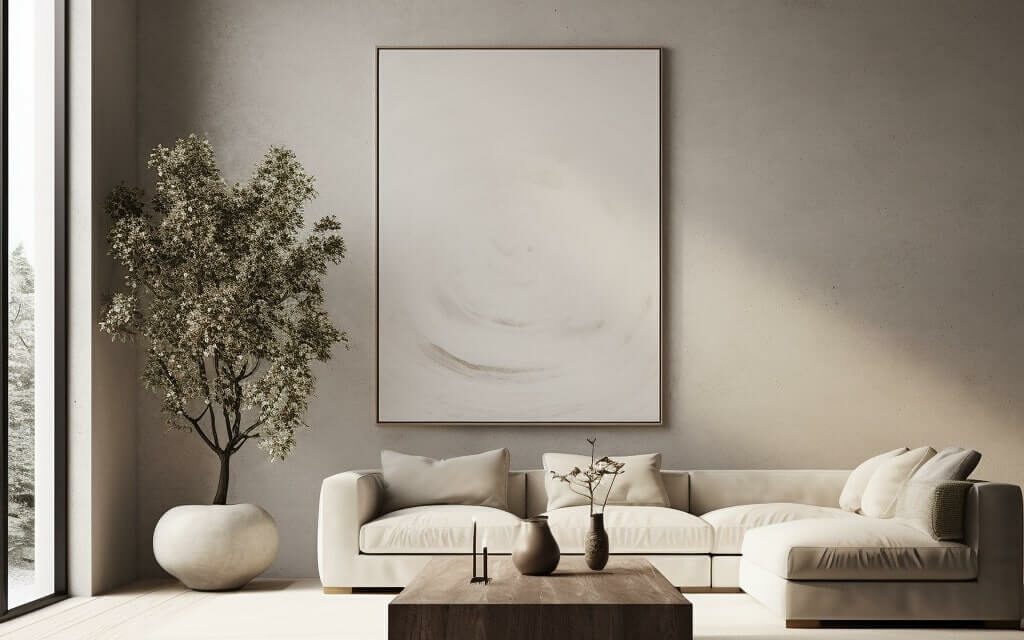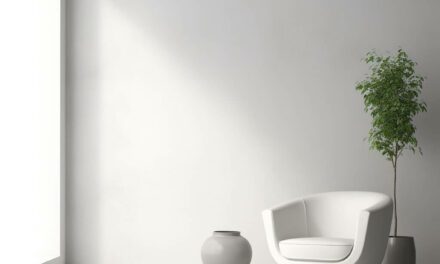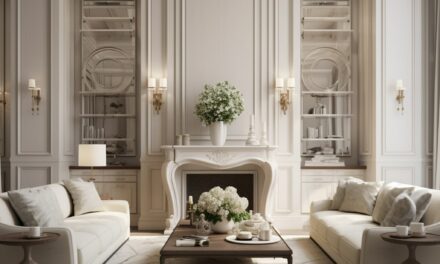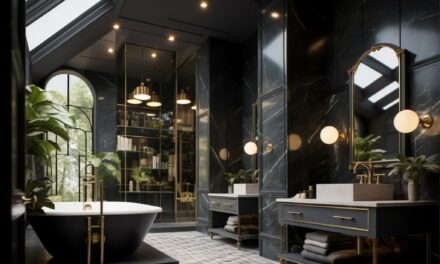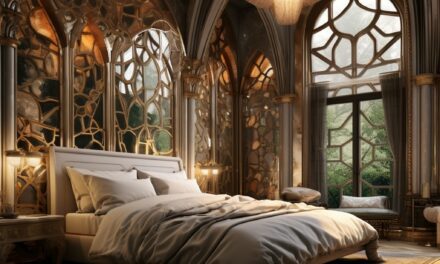Interior design is the art of transforming spaces into visually appealing and functional environments. The key to achieving this lies in understanding the principles of interior design. By grasping these fundamental concepts, you can create spaces that are not only aesthetically pleasing but also practical and comfortable.
In this article, we will explore the seven principles of interior design and explain how they work together to create visually harmonious and functional spaces. Whether you are a beginner or a professional in the field of interior design, this article will provide you with valuable insights and techniques to elevate your design skills.
The Importance of Interior Design Principles
Interior design principles are the foundation of creating visually appealing and functional spaces. They provide a set of guidelines and rules that can be used to make design decisions and improve the overall aesthetics of a room.
By understanding and applying these principles, designers can achieve harmony, balance, and rhythm in a space. They can create focal points, manipulate the perception of size and scale, and add visual interest through contrast and repetition.
Without a solid understanding of these essential principles, interior design decisions can be arbitrary and ineffective. A lack of coherence and harmony can lead to unbalanced and chaotic spaces that do not serve their intended purpose.
Overall, interior design principles are crucial for creating spaces that not only look beautiful but also function effectively for their intended use. By using these key principles as a guide, designers can create spaces that are both visually pleasing and functional. So, What Are the 7 Principles of Interior Design?
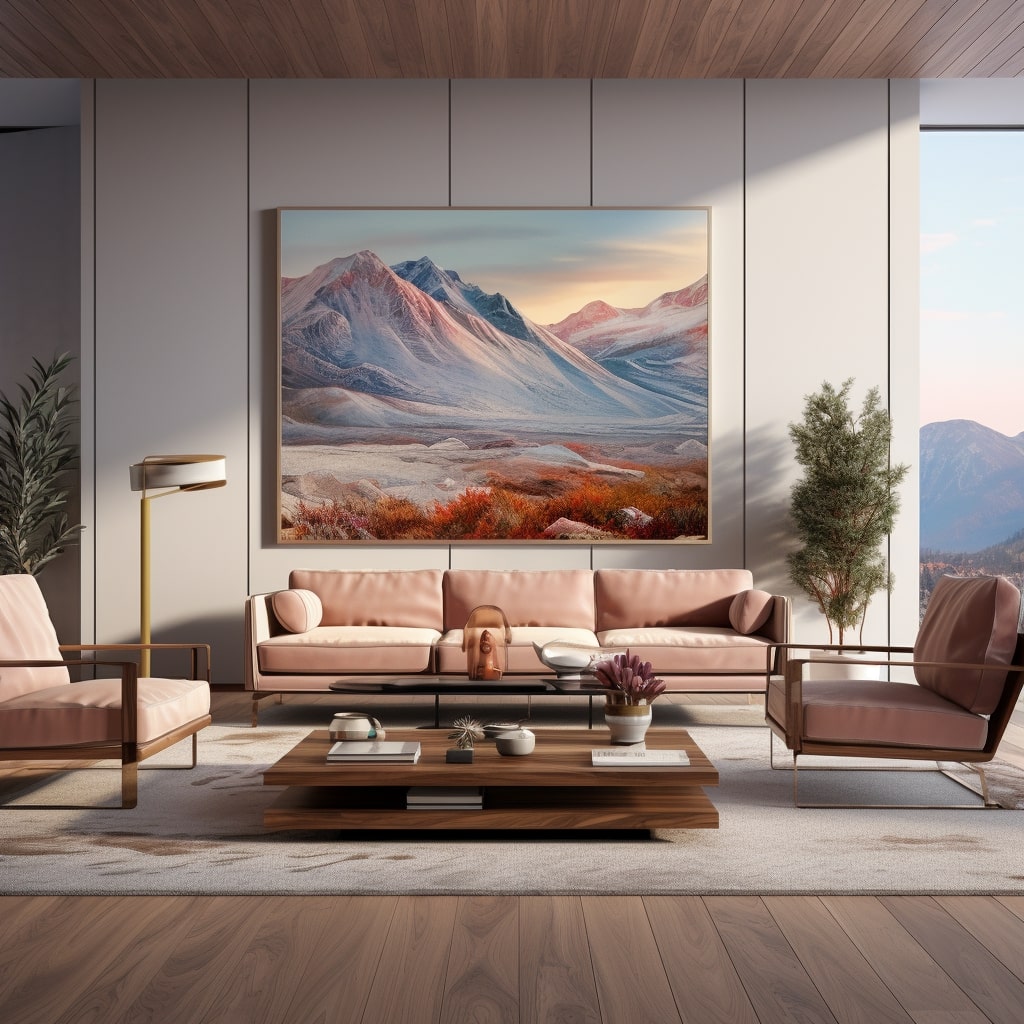
Principle 1: Balance
Balance is the first principle of interior design, and it is essential to creating a visually appealing space. Balance refers to the distribution of visual weight within a room, which can be achieved through various arrangements and positioning of furniture and decor.
There are two types of balance: symmetrical and asymmetrical. Symmetrical balance involves arranging items in a way that mirrors each other, creating a sense of equilibrium. Asymmetrical balance, on the other hand, involves arranging items in a way that creates balance through contrast, without identical matching pieces.
To achieve balance, it is important to consider the size and scale of items in a room. Larger items can visually weigh down a space, while smaller items may appear lost or insignificant, creating visual imbalance. Finding the right balance between these elements is key to creating a harmonious and aesthetically pleasing interior.
Principle 2: Unity
Unity is an essential principle of interior design, as it creates a sense of coherence and harmony in a space. By ensuring that all the elements in a room work together, you can create a visually appealing and functional environment.
One effective way to achieve unity is through the use of color schemes. Selecting a cohesive color palette and incorporating it throughout the room can create a sense of flow and continuity. Consider using variations of the same color or complementary colors for a striking effect.
Patterns and textures can also contribute to a sense of unity. By choosing patterns and textures that complement one another, you can create a cohesive and harmonious look. For example, blending a floral patterned sofa with a solid-colored rug can create a balanced and unified space.
Finally, consider the materials and finishes used in a room. Using similar materials throughout the space, such as wood or metal, can create a consistent and harmonious look. However, combining different textures and materials can also add depth and interest to a room, as long as they complement one another.
Principle 3: Rhythm and Repetition
One of the most effective ways to add movement and visual interest to a room is through the use of rhythm and repetition. These elements create a sense of continuity and flow, guiding the eye through the space and creating a sense of coherence.
Rhythm can be achieved through patterns, shapes, and textures. Repetition involves using the same or similar elements throughout a space, whether in the form of color, pattern, or shape. Both rhythm and repetition can be used to create a soothing, calming effect, or to add energy and excitement to a room.
When incorporating rhythm and repetition into a space, it’s important to strike a balance between consistency and variation. Too much repetition can lead to a monotonous, boring space, while too much variation can be overwhelming and chaotic.
Consider using accent pieces or pops of color to add variation while still maintaining a sense of continuity. Additionally, varying the scale or size of repeating elements can add interest and depth to a space.
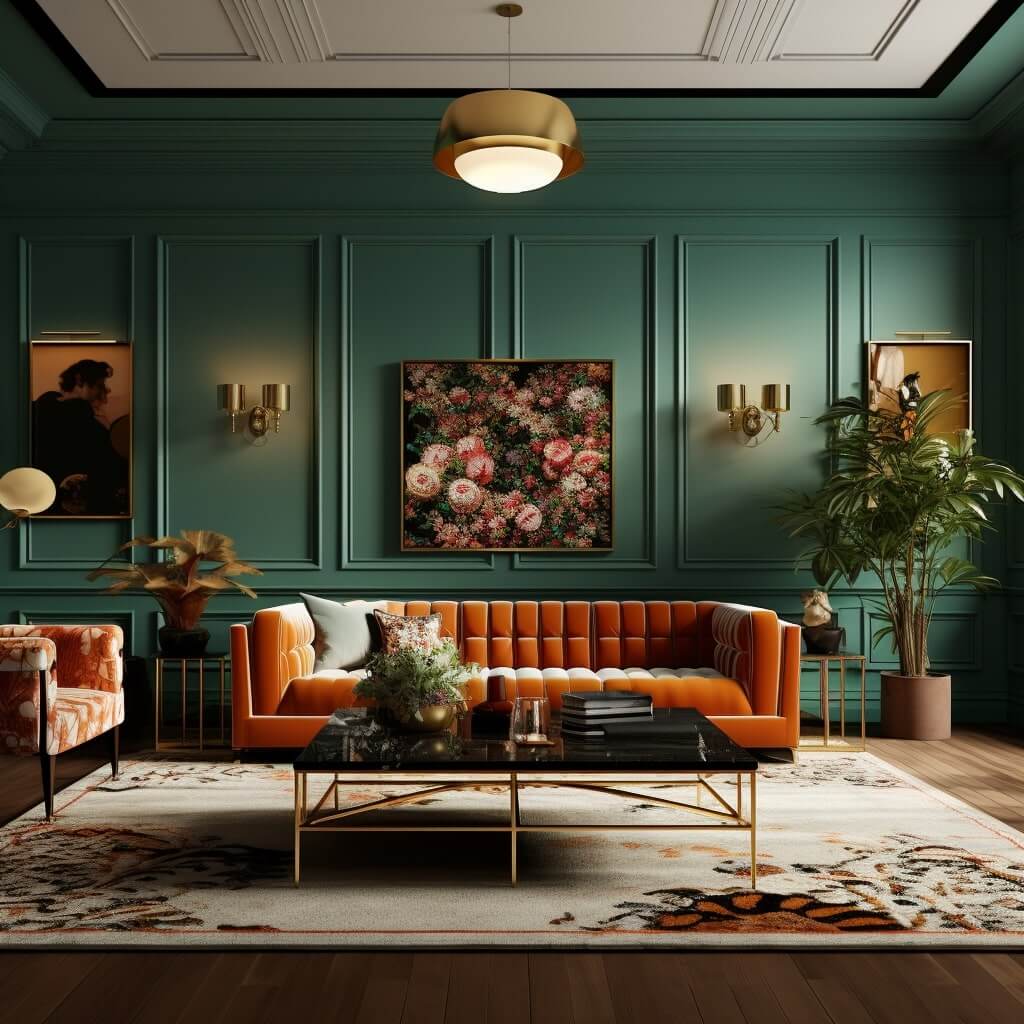
Principle 4: Emphasis
The principle of emphasis refers to the use of specific elements to create a focal point or draw the viewer’s attention to a particular area or object in a room. By creating contrast, scale, and lighting, you can achieve emphasis and add visual interest to your space.
One effective way to create emphasis is by using contrasting colors. For instance, you can use a bright color against a neutral background to make a certain object stand out. Using different patterns or textures can also create contrast and emphasize a particular area.
Scale is another essential element in creating emphasis. By placing a larger object in a room, you can draw attention to it and create a focal point. Similarly, grouping smaller objects together can also create emphasis.
Lighting is a powerful tool in creating emphasis in a room. By adding a spotlight or highlighting a particular object, you can create a visual hierarchy and draw attention to specific areas.
When designing your space, try to use emphasis sparingly, as too many focal points can create a chaotic or cluttered look. Instead, focus on creating one or two points of emphasis to draw attention and add interest to your room. Here are some tips on avoiding clutter in your home.
Principle 5: Scale and Proportion
When it comes to creating a visually appealing space, scale and proportion are key elements to consider. Properly selecting furniture and decor that fit the size of a room is essential for maintaining visual balance and avoiding overwhelming or cluttered spaces.
One common mistake is selecting furniture that is either too large or too small for the area it occupies. This can throw off the overall proportions of the room and make it appear disjointed. To avoid this, it’s important to measure the room and carefully select furniture that appropriately fits the space.
In addition to selecting the right sized furniture, it’s important to maintain a sense of proportion throughout the room. This means selecting decor that complements the size of the furniture and fits within the overall aesthetic of the room. Avoid overcrowding by allowing for breathing space between furniture and decor items. This can help create a sense of flow and harmony within the space.
Experimenting with different forms in your designs is also key to getting your scale and proportion right.
When it comes to balancing scale and proportion in a room, it’s often helpful to follow the rule of thirds. This rule suggests dividing the room into thirds horizontally and vertically and placing furniture and decor items along these lines. This can help create a cohesive and visually appealing space. It’s also worth looking at the golden ratio in interior design to help you use scale properly and experiment with is limitations.
Remember: choosing furniture and decor that appropriately fits the size of the room and maintaining a sense of proportion are essential for creating a visually balanced and harmonious space.
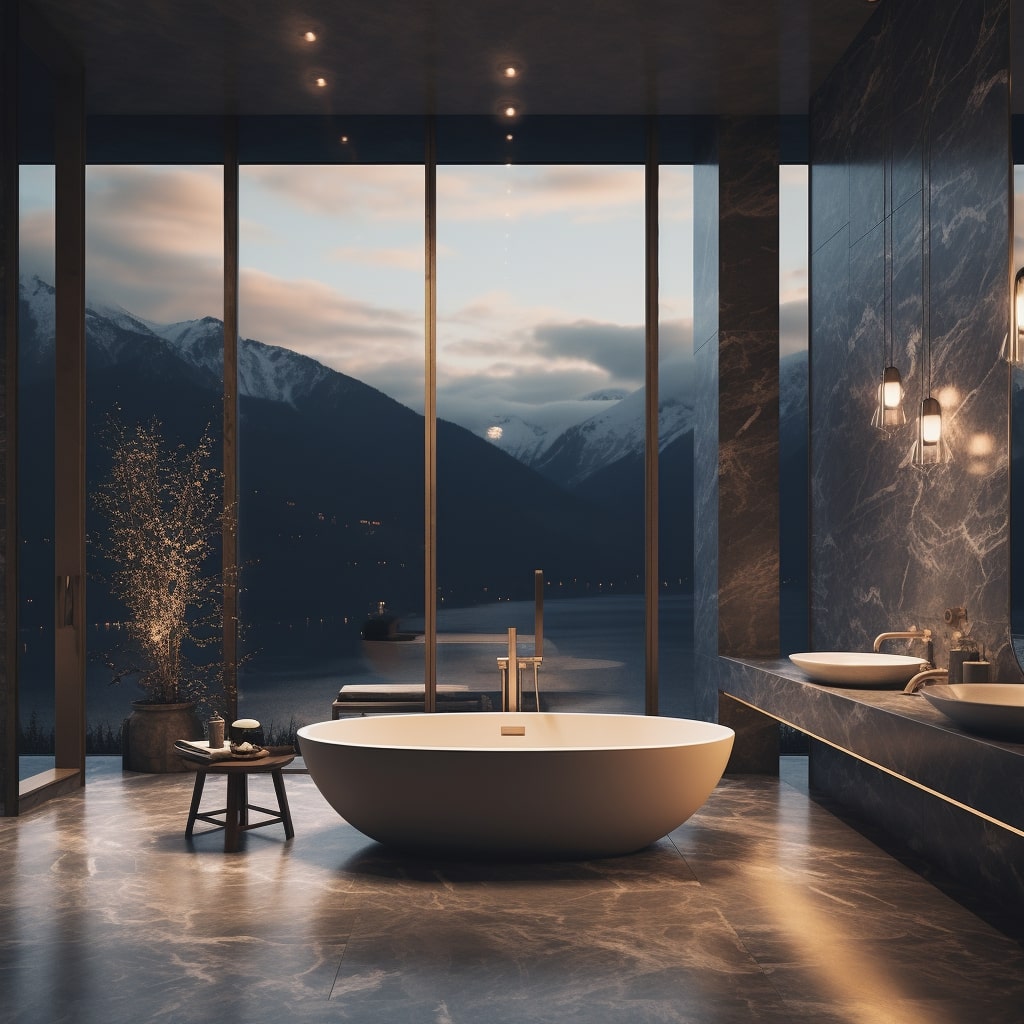
Principle 6: Contrast
When it comes to creating a visually interesting interior design, contrast is key. This principle involves incorporating elements that are different in size, shape, texture, or color, to create a dynamic space.
One effective way to incorporate contrast is through the use of color. Pairing light and dark shades together can emphasize specific areas of a room and make them stand out. For example, a navy blue accent wall in a light-colored room can add a sense of depth and contrast.
Another way to incorporate contrast is through texture. Pairing smooth and rough textures together can create a dynamic and interesting space. For example, pairing a smooth leather sofa with a chunky knit blanket can create a cozy and visually interesting contrast.
When incorporating contrast, it’s important to strike a balance between too little and too much. Too little contrast can create a boring and monotonous space, while too much contrast can lead to a chaotic and overwhelming environment.
Read my guide to using opposition in interior design for my ideas.
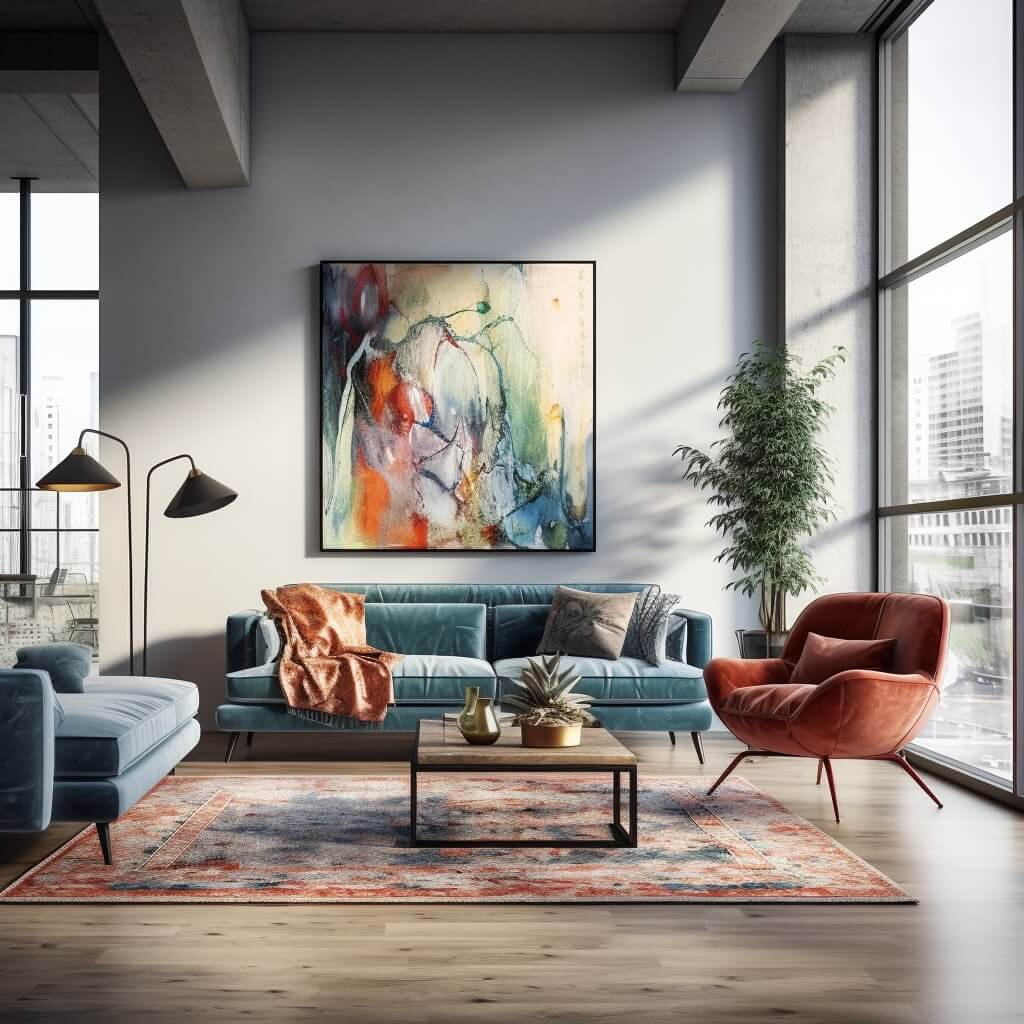
Principle 7: Harmony and Flow
The final principle of interior design is harmony and flow. Achieving harmony ensures that a room feels cohesive and put-together, while flow focuses on creating smooth transitions between different areas of a space.
To create harmony, choose a color scheme that works well together, such as complementary colors or a monochromatic scheme. Using one or two patterns throughout the room can also help tie everything together. It’s also essential to consider the scale and proportion of furniture and decor to ensure they complement each other.
Flow is achieved by considering the traffic flow in a room and ensuring that there is enough space to move around easily. Furniture placement is also crucial in creating a sense of flow, with larger pieces of furniture being placed along the walls and smaller pieces used to create conversation areas.
Remember that both harmony and flow are subjective and depend on personal preferences. Experiment with different layouts and color schemes until you find one that feels cohesive and has a good flow.
Also try some interior design rendering to visualise your designs before acting on them.
Frequently Asked Questions about Interior Design Principles
If you’re new to the world of interior design or just looking to refresh your knowledge, you may have questions about the fundamental principles of interior design. We’ve compiled a list of frequently asked questions to help you better understand this topic.
What are the essential principles of interior design?
There are seven key principles of interior design that provide a foundation for creating visually appealing and functional spaces. These include balance, unity, rhythm and repetition, emphasis, scale and proportion, contrast, and harmony and flow.
How do these principles benefit interior design?
By understanding and utilizing these principles, you can ensure that your design decisions are cohesive, harmonious, and visually pleasing. They provide a framework for selecting colors, textures, and materials, as well as determining furniture placement and lighting options.
Should I use all seven principles in every design project?
Not necessarily. Each project is unique, and some principles may be more applicable than others. It’s important to understand all seven principles, but you can choose which ones to focus on based on the specific design goals and needs of the space.
How can I achieve balance in a room?
Balance can be achieved through symmetrical or asymmetrical arrangements. Symmetrical balance involves mirroring elements on either side of a central point, while asymmetrical balance involves using different but equally weighted elements to achieve balance.
What is the importance of unity in interior design?
Unity creates harmony and coherence in a space, ensuring that all of the elements work together to create a cohesive design. It can be achieved through color schemes, patterns, and materials, among other design elements.
How do I create emphasis in a room?
Emphasis can be created by using contrast, scale, or lighting to draw attention to a specific area or object in a room. By creating a focal point, you can add visual interest and create a more visually dynamic space.
What is the role of scale and proportion in interior design?
Proper scale and proportion are essential for creating a balanced and visually appealing space. It involves selecting furniture and decor that appropriately fits the size of the room and maintaining visual balance.
How can I effectively use contrast in my design?
Contrast can be achieved through the use of different colors, textures, and shapes. It adds visual interest and can create a more dynamic and visually stimulating space.
What is the importance of harmony and flow in interior design?
Harmony and flow ensure that all areas of a room work together to create a cohesive and seamless design. This can be achieved through careful color selection, furniture arrangement, and spatial planning.
We hope this FAQ has provided helpful information on the fundamental principles of interior design. By understanding and utilizing these principles, you can create visually appealing and functional spaces in any home or office setting.







